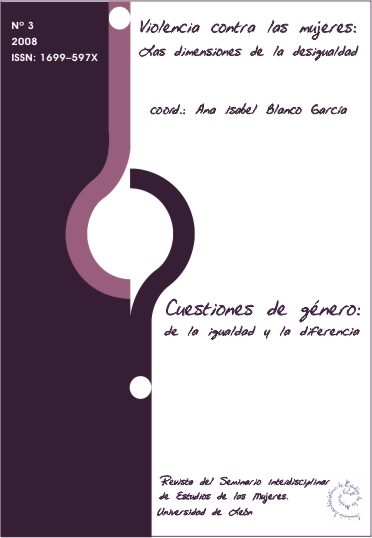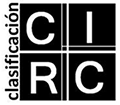Sexual desire, narcissistic fantasy and violence
DOI:
https://doi.org/10.18002/cg.v0i3.3832Keywords:
smbólica de lo femenino, deseo narcisista, deseo sexual, violencia, symbolic representations of the feminine, narcissistic desire, sexual desire, violenceAbstract
The construction of a symbolic representation of the feminine is an urgent task our culture is required to face up. Love relationships cause all fantasies supporting communicative, dual intersubjectivity to come into play. Yet, facing up sexual relations results, soon or later, in the disappointment about the fascinating object staged within the seduction secene. How to manage to go through such situation is a distinctive knowledge belonging to feminine that intervenes in courtship. Being aware that they offer the Ego the Death, women incite, and offer themselves as being the object of desire. If they succeed, then the narcissistic desire will cross the mirror, and it will be possible for the Subject to experience the real Other, i.e., the other sex. If she fails, the lover, captured in the net of mirror reflections, may opt to break the mirror.
Downloads
Métricas alternativas
References
BOIX REIG, J. y MARTÍNEZ GARCÍA, E. (2005): La nueva ley contra la violencia de género Ed. Lustel: Madrid
CÁCERES ZAPATERO, Mª Dolores (2006): “Comunicación y Educación. Un balance cualitativo”. En Icono 14, nº. 7.
FREUD, Sigmund (1919): “Más allá del Principio del Placer” Obras Completas. Biblioteca Nueva: Madrid.
FREUD, Sigmund (1923): "El Yo y el Ello". Obras Completas. Biblioteca Nueva: Madrid.
GUIJARRO JIMÉNEZ, A. y cols. (1999): Influencias de la televisión en la infancia y adolescencia (I), vol. 29, nº. 272, pp. 263-269
GUIJARRO JIMÉNEZ, A. y cols (1999): Influencias de la televisión en la infancia y adolescencia (II), vol. 29, nº. 273, pp. 289-293
LACAN, J. (1966): “El estadío del espejo como formador de la función del yo tal como se nos revela en la experiencia psicoanalítica” Écrits. Éditions du Seuil: París. Trad. 1971 Escritos I. Siglo XXI.
LACAN, J. (1966): “La agresividad en psicoanálisis” Écrits. Éditions du Seuil: París. Trad. 1975 Escritos II. Siglo XXI
LACAN, J. (1981): Le Séminaire de Jacques Lacan. Livre III: Les Psychoses. Éditions du Seuil: París. Trad. 1984 El Seminario de Jacques Lacan 3: Las Psicosis Ed. Paidós: Barcelona. (Seminario de 1956).
LACAN, J. (1975): Le Séminaire de Jacques Lacan. Livre XX: Encore, 1972-1973. Éditions du Seuil: París. Trad. 1981: Aun. Paidós: Buenos Aires.
MINISTERIO DE INDUSTRIA, TURISMO Y COMERCIO: Código autorregulación contenidos televisión e infancia. Disponible en: http://www.mityc.es/MediosAudiovisuales/Secciones/Contenidos/ProteccionMenor/2.Codigo/ [1/01/2008].
SERRANO GONZÁLEZ, Mª Isabel (ed.) (2002): La Educación para la Salud del siglo XXI: Comunicación y salud. Ediciones Díaz de Santos: Madrid.
UNIVERSIDAD DE SEVILLA, Universidad Internacional de Andalucía (2005): Violencia Editorial Padilla Libros
ZIMMERMAN, Frederick; CHRISTAKIS, Dimitri; (2005): “Childen’s Televisión Viewing and Cognitive Outcomes. A Longitudinal Analysis of National Data” Archives of Pediatrics & Adolescent Medicine, vol. 159, nº. 7, July, pp. 619-625
Downloads
Published
How to Cite
Issue
Section
License
Copyright (c) 2008 Amaya Ortiz de Zárate

This work is licensed under a Creative Commons Attribution-NonCommercial-ShareAlike 4.0 International License.
L@s autores/as que publican en esta revista están de acuerdo con los siguientes términos:
1. L@s autores/as ceden de forma no exclusiva los derechos de explotación (reproducción, distribución, comunicación pública, transformación) a la Universidad de León, por lo que pueden establecer, por separado, acuerdos adicionales para la distribución no exclusiva de la versión de la obra publicada en la revista (por ejemplo, alojarlo en un repositorio institucional o publicarlo en un libro), con un reconocimiento de su publicación inicial en esta revista.
2. Este trabajo se encuentra bajo la Creative Commons Attribution-NonCommercial-ShareAlike 4.0 International License. Puede consultarse desde aquí la versión informativa y el texto legal de la licencia.
3. Se permite y se anima a l@s autores/as a difundir electrónicamente las versiones pre-print (versión antes de ser evaluada) y/o post-print (versión evaluada y aceptada para su publicación) de sus obras antes de su publicación, ya que favorece su circulación y difusión más temprana y con ello un posible aumento en su citación y alcance entre la comunidad académica.
Cuestiones de Género utiliza exclusivamente la licencia Atribución-NoComercial-CompartirIgual 4.0 Internacional (CC BY- NC-SA 4.0).
Bajo los siguientes términos:
- Atribución: Usted debe dar crédito de manera adecuada , brindar un enlace a la licencia, e indicar si se han realizado cambios . Puede hacerlo en cualquier forma razonable, pero no de forma tal que sugiera que usted o su uso tienen el apoyo de la licenciante.
- No Comercial: Usted no puede hacer uso del material con propósitos comerciales .
- Compartir Igual: Si remezcla, transforma o crea a partir del material, debe distribuir su contribución bajo la la misma licencia del original. cualquier uso permitido por la licencia.
No hay restricciones adicionales — No puede aplicar términos legales ni medidas tecnológicas que restrinjan legalmente a otras a hacer
L@s autores/as pueden consultar los derechos de copyright y las condiciones de autoarchivo en el directorio Dulcinea.










